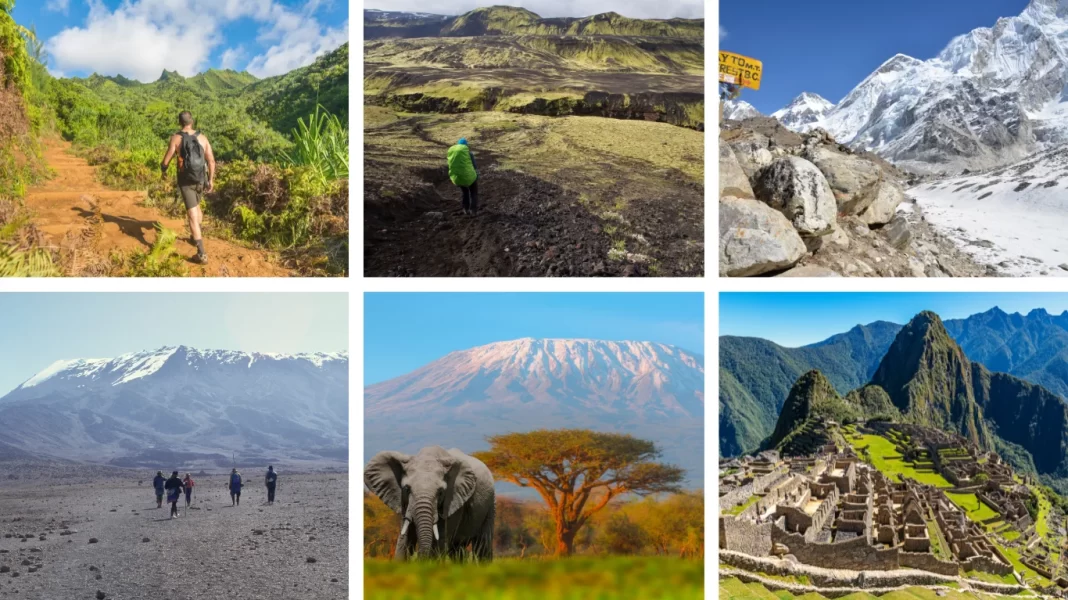Hiking trails are a fantastic way to connect with nature, challenge yourself, and explore stunning landscapes. Some trails are celebrated for their physical challenges, breathtaking views, unique ecosystems, and cultural significance. These trails take you through dense forests, across beaches, and into iconic regions like Patagonia, Machu Picchu, and the Grand Canyon, making every step an adventure.
In this article, I’ll take you on a journey across continents to introduce you to the top scenic hikes globally, from the snow-capped peaks of Mont Blanc to the rugged coastlines of Hawaii. You can look forward to exploring picturesque hiking trails in Torres del Paine Circuit, Chile, marveling at the geological wonders along the Laugavegur Trail, Iceland, and conquering the revered paths to Everest Base Camp, Nepal.
Related: Find out what the best safety tips you can follow when you decide to go hiking , in this article here.
The Best hiking trails
Each section will offer hiking trail recommendations that not only highlight the beauty and challenges of these famous hiking spots but also provide tips and insights to enhance your experience. Whether you’re seeking the peaceful solitude of nature hikes or the thrill of climbing to the world’s best hike summits, this comprehensive guide has the must-visit hiking trails for every adventurer’s bucket list.
We will list off the most famous hiking locations, going into detail about the distance and duration of the hike, best time to visit, and the highlights of the World’s best hikes. We will go over all worlds most beautiful hiking spots.
1. Everest Base Camp, Nepal
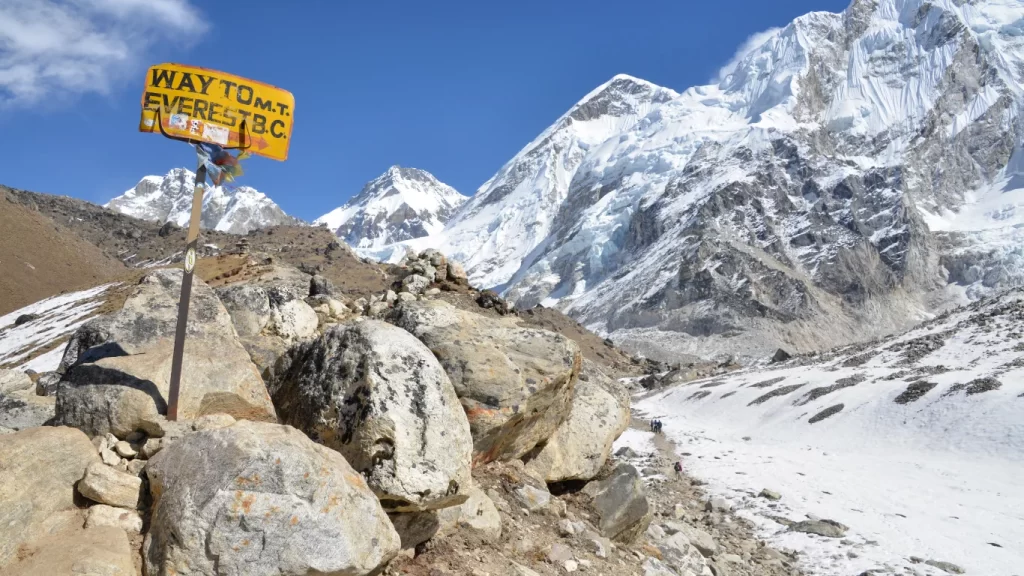
Embarking on the classic Everest Base Camp trek from Lukla to the base camp and all the way back covers a distance of approximately 130 kilometres, with each leg of the journey stretching around 65 kilometres. This expedition typically spans 12 days, although variations like the Jiri to Everest Base Camp and Gokyo Lakes trek may extend this duration due to their longer routes.
Distance and Duration
The journey to Everest Base Camp is not only a physical challenge but also a test of endurance and acclimatization. The journey from Lukla to the base camp usually takes about nine days. This allows for gradual acclimatization to reduce the risk of Acute Mountain Sickness. The return journey to Lukla takes about three days, making the entire trip around 12 days long. The route includes several acclimatization days, particularly in places like Namche Bazaar and Dingboche, which are crucial for adapting to the high altitude.
Best Time to Visit
The Everest Base Camp trek can be tackled most favourably during two main seasons: from March to May and from mid-September to November. These periods avoid the harsh winter snows and the summer monsoon rains, providing clearer skies and more stable weather for trekking. The pre-monsoon spring months and the post-monsoon autumn months offer the best conditions for clear views and manageable temperatures, making them ideal for this challenging trek.
Trail Highlights
One of the most significant highlights of this trek is reaching Kala Patthar, which, at over 5500 meters, offers some of the most stunning views of Everest and the surrounding peaks. This viewpoint is the highest point on most Everest Base Camp treks and is a key goal for many trekkers. Along the route, trekkers traverse rugged trails, glacial paths, and Sherpa villages, enriching the journey with cultural insights and breathtaking natural scenery. The trek also passes through the Sagarmatha National Park, offering opportunities to witness diverse flora and fauna native to this region.
The infamous Everest Base Camp trek is more than just a physical journey. It’s a personal challenge and a deep connection with nature. With its beautiful scenery and the goal of reaching the base of the world’s highest mountain, it’s one of the most famous treks in the world.
2. Inca Trail, Peru
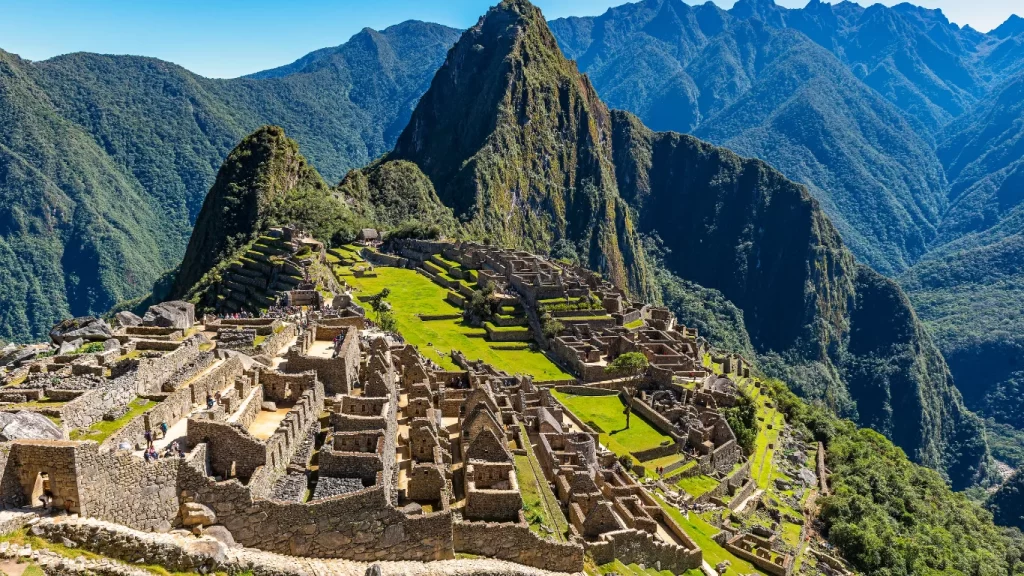
Embarking on the beautiful Inca Trail in Peru is a journey through an extensive network of stone paths and staircases that lead adventurers through the breathtaking landscapes of the Andes. This trail is not only a physical challenge but a passage through the rich history of the Inca Empire.
Distance and Duration
The classic Inca Trail route covers 26 miles (43 kilometres) and is typically completed over four days and three nights. Each day, hikers cover an average of 6 to 10 kilometres, depending on the specific campsites allocated for their tour group. Despite the manageable daily distances, the altitude, which reaches up to 13,776 feet (4,200 meters) at its highest point, poses a significant challenge. For those pressed for time, a shorter, one-day version of the Inca Trail is available, covering 5.81 miles (9.35 kilometres) and culminating with a visit to the majestic Machu Picchu.
Best Time to Visit
The optimal months for embarking on the Inca Trail are May through September, during Peru’s dry season. These months offer clearer skies and more temperate weather, enhancing visibility and overall trekking conditions. However, it’s important to book well in advance, as permits can sell out quickly, especially around popular times such as Easter and the summer holidays. For those looking to avoid the crowds, the shoulder months of April, September, and October present a wonderful opportunity with fewer tourists and still favourable weather conditions.
Trail Highlights
The Inca Trail offers an array of stunning sights and experiences. From climbing ancient stone staircases to navigating through lush cloud forests, hikers are treated to incredible views of snow-capped peaks and intricate archaeological sites like Wiñayhuayna and Phuyupatamarca. The journey culminates in the incredible and awe-inspiring arrival at Machu Picchu through the Sun Gate, where hikers are rewarded with a beautiful panoramic view of the ruins bathed in the early morning light. Along the way, the diverse terrain and rich ecological variety, including over 250 species of orchids and sightings of rare wildlife like the spectacled bear, make every step memorable.
This trek is not just a hike but a journey back in time. It offers a deep connection with the history and culture of the Inca civilization, making it a must-experience adventure for those visiting Peru.
3. Kilimanjaro, Tanzania
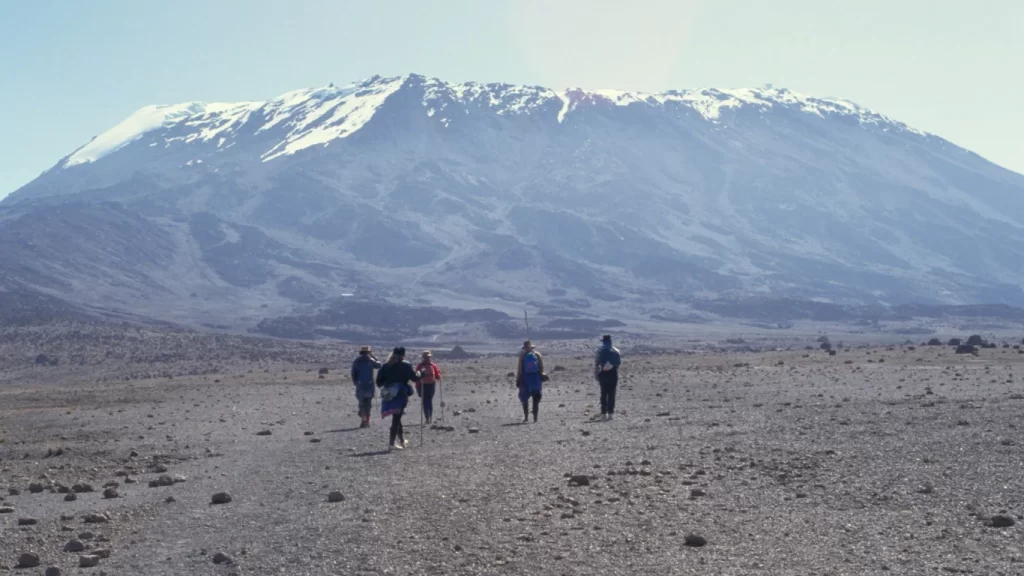
Embarking on a trek to the summit of the infamous Mount Kilimanjaro in Tanzania is both a formidable and exhilarating adventure. Known as the highest mountain in Africa, Kilimanjaro poses a unique challenge due to its towering altitude and the need for careful acclimatization.
Distance and Duration
The journey to the summit of Kilimanjaro and back can take anywhere from five to nine days, depending on the route chosen and the trekker’s experience with altitude. The longer durations, typically 8 or 9 days, are highly recommended as they significantly increase the likelihood of a successful summit. This is primarily because additional days allow for better acclimatization to the high altitude, thereby reducing fatigue and increasing overall trek safety. Routes like Marangu and Umbwe can be completed in a shorter span of about five days, but this is generally not advised unless one is exceptionally fit and accustomed to such altitudes.
Best Time to Visit
The optimal periods for climbing Kilimanjaro are during the driest and warmest months, which include January to mid-March and mid-June to the end of October. These months offer the best and most stable weather conditions, with clear skies and almost minimal precipitation, enhancing the trekking experience and providing spectacular views. January and February stand out as particularly favourable, offering warm temperatures and clear skies. It’s crucial to avoid the long rainy season from the end of March to early June and the short rainy season in November, as these can make the trails slippery and obscure the stunning views.
Trail Highlights
Kilimanjaro is renowned not just for its peak but also for the diverse landscapes and ecological zones one traverses while ascending. The trek includes passing through lush rainforests, alpine meadows, and arctic zones at the highest elevations. Significant landmarks such as the Lava Tower and the Barranco Wall offer challenging and exciting obstacles that are memorable parts of the climb. The final push to the summit of Uhuru Peak presents awe-inspiring views over the clouds, making the strenuous journey incredibly rewarding. Additionally, the unique flora and fauna encountered along the different routes provide enriching natural encounters that complement the physical challenge.
Tackling Kilimanjaro is more than just a climb; it’s an immersive journey that tests one’s endurance and offers profound connections with the natural world.
4. Torres del Paine Circuit, Chile
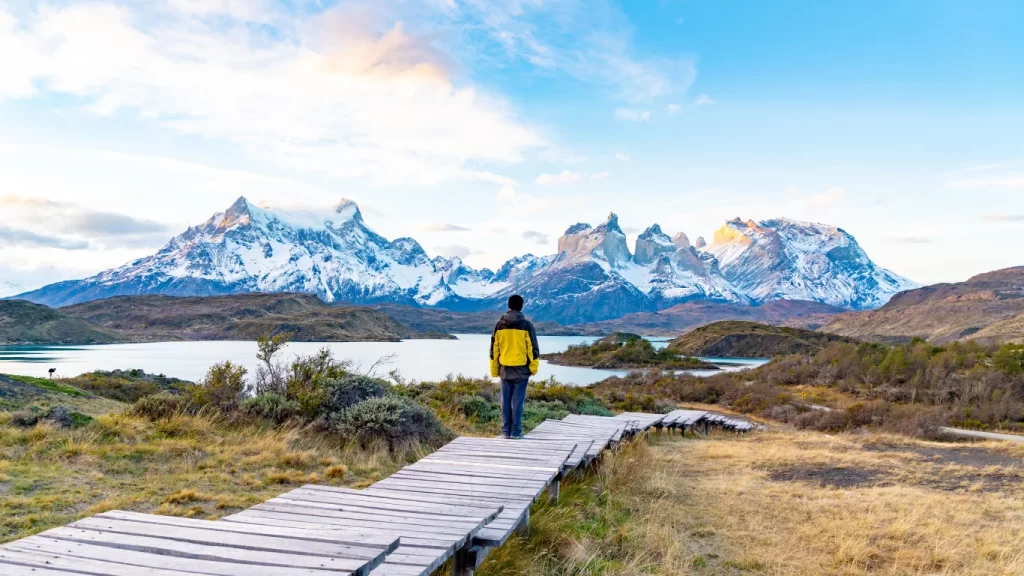
Embarking on the Torres del Paine Circuit, also known as the ‘O Circuit,’ presents a remarkable journey through Chilean Patagonia’s Torres del Paine National Park. This trek is famed for its comprehensive exploration of the park’s diverse landscapes, encompassing everything from rugged mountain terrains to serene glacial lakes.
Distance and Duration
The total length of the O Circuit is approximately 120 kilometres (about 75 miles), making it a substantial trek that typically requires between 7 to 9 days to complete. This route is designed to be traversed counterclockwise, starting from the Hotel Las Torres (Central campsite). Hikers will journey through a variety of terrains, including remote areas that offer a more secluded experience compared to the park’s more frequented paths. Daily hiking times average between 6 to 8 hours, with the most challenging segment being a 900-meter ascent to John Gardner Pass. Due to the demanding nature of this trek, it is recommended for those who are in good physical condition and have prior hiking experience.
Best Time to Visit
The ideal months to undertake the O Circuit in Torres del Paine are during the Patagonian summer and early autumn, from early December to late March. During this period, the weather is generally more stable, providing clearer skies and milder temperatures, which are conducive to hiking. The park experiences its peak visitation between January and February, so planning your trip outside of these months can result in a less crowded experience. It is crucial to book campsites in advance as they are mandatory and the only permitted places for overnight stays along the route.
Trail Highlights
The O Circuit offers an array of stunning natural features and diverse ecological zones. Hikers will encounter vivid turquoise lakes, cascading waterfalls, and panoramic views from elevated lookouts. The trek includes the renowned W trek paths but also extends into less travelled areas, providing a unique perspective of the park’s northern sections. Key sights include the majestic Grey Glacier and the iconic towers of Paine. The route’s varying landscapes are home to an array of wildlife, including guanacos and possibly the elusive puma, enhancing the trek with opportunities for wildlife viewing. Furthermore, the circuit allows adventurers to witness the dramatic changes in vegetation and terrain, from dense forests to open steppes and alpine moors.
This trek not only challenges hikers’ physical capabilities but also offers a profound connection with nature’s untouched beauty in one of South America’s most spectacular national parks.
5. Laugavegur Trail, Iceland
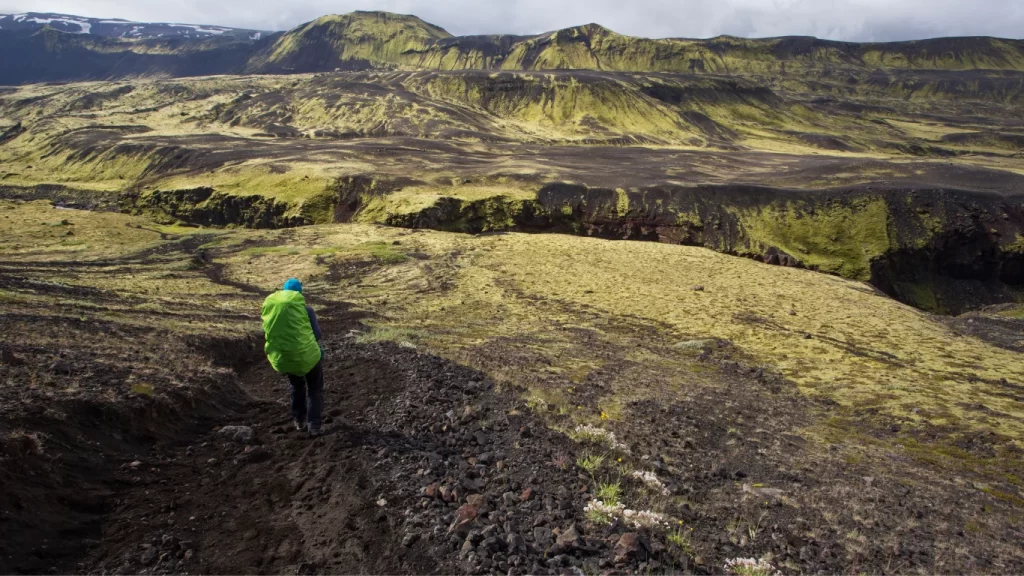
Embarking on the Laugavegur Trail in Iceland is a journey through a mesmerizing landscape that combines colourful rhyolite mountains, vast glaciers, and hot springs. This trail, stretching approximately 55 kilometres (34 miles) from Landmannalaugar to Thórsmörk, is an unforgettable adventure through some of Iceland’s most unique and visually stunning terrains.
Distance and Duration
The Laugavegur Trail is typically completed over a three to four-day period, offering a moderately paced hiking experience that allows trekkers to absorb the dramatic scenery fully. The journey can be extended by incorporating the Fimmvörðuháls pass, adding an extra day or two to explore the remote village of Skógar and its enchanting surroundings. For those starting in Landmannalaugar and heading south to Thórsmörk, the trek involves navigating through diverse landscapes, from black sand basalt fields to snow-dusted rhyolite hills, with each day bringing about six to eight hours of hiking.
Best Time to Visit
The optimal time to hike the Laugavegur Trail is during the Icelandic summer, from mid-June to mid-September. July and August are exceptionally favourable, offering longer daylight hours and generally milder weather, which enhances the hiking experience and reduces the likelihood of encountering severe weather. However, these months also coincide with peak tourist season, so while the trails may be busier, the shared experiences with fellow hikers from around the globe can enrich the journey.
Trail Highlights
The trail offers a plethora of breathtaking sights and natural phenomena. Starting with the steamy geothermal areas of Landmannalaugar, hikers traverse red and gold rhyolite mountains, each step revealing views of expansive glaciers and lush valleys. Notable highlights include the panoramic views from Jökultungur and the dramatic approach to the Mýrdalsjökull and Eyjafjallajökull glaciers, which sit atop active volcanic calderas. The diversity of the landscape is staggering, from volcanic deserts to vibrant mossy tundras, and the occasional river crossing adds an element of adventure to the trek. The trail concludes with the descent into Thórsmörk, a lush valley surrounded by mountains, offering a striking contrast to the stark volcanic fields encountered earlier.
Each segment of the Laugavegur Trail promises a unique encounter with Iceland’s raw and rugged beauty, making it a must-visit for avid hikers seeking a challenging yet visually rewarding hiking experience.
6. Kalalau Trail, Hawaii, USA
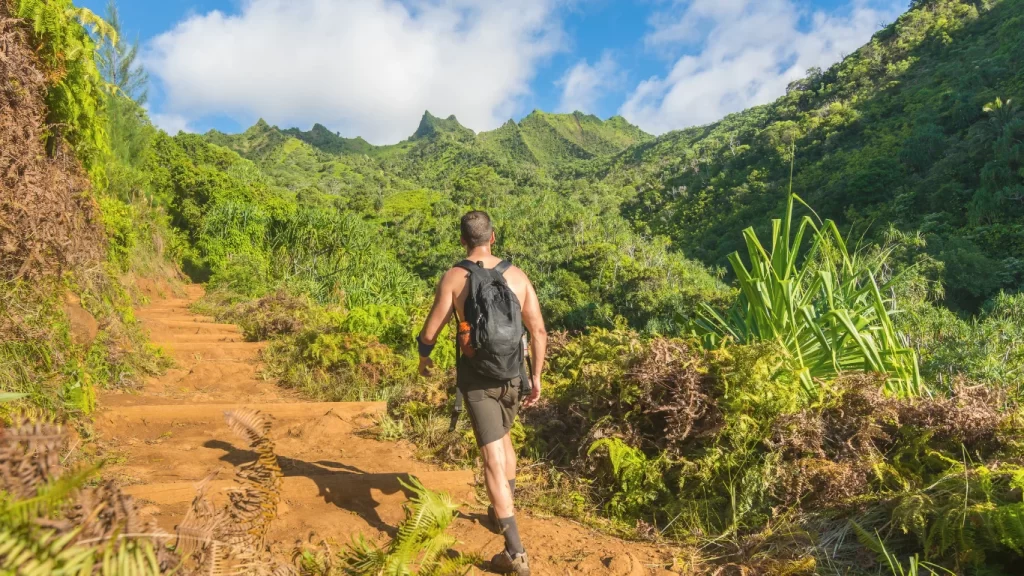
Embarking on the Kalalau Trail in Hawaii offers an adventurous journey along the Napali Coast of Kauai. This trail is renowned for its stunning coastal views and challenging terrain, making it a favourite among experienced hikers seeking a multi-day backpacking experience.
Distance and Duration
The Kalalau Trail is a 22-mile out-and-back hike that challenges even seasoned hikers. Depending on one’s pace and experience, the trail typically takes 2 to 6 days to complete. The trek involves a massive elevation gain of approximately 6,000 feet, with the trailhead starting near sea level and reaching up to 818 feet. Key campsites along the route include Hanakoa at mile 6 and Kalalau Beach at mile 11, where hikers can rest and enjoy the natural beauty of Kauai.
Best Time to Visit
The best time to hike the Kalalau Trail is between June and October, when the weather is drier. Although it is possible to hike year-round, the months from November to May are the rainiest. These months make the trail more challenging and potentially hazardous due to slippery conditions. Hikers are advised to avoid these months to experience the trail under safer and more enjoyable conditions.
Trail Highlights
The Kalalau Trail offers a variety of breathtaking sights and unique experiences. The journey begins with a steep, rocky ascent, quickly rewarding hikers with spectacular views of the coastline. The trail then weaves through lush jungles and arid coves, providing diverse scenery and ample opportunities for wildlife sightings. A significant highlight is the Crawler’s Ledge around mile 7, an exposed cliffside path that offers thrilling views over the ocean. The trail culminates at the beautiful Kalalau Beach, a perfect place to relax after the demanding hike. Here, one can explore the nearby waterfalls, enjoy the sandy beach, and even meet fellow backpackers and locals who frequent this remote location.
The Kalalau Trail not only tests one’s physical stamina but also provides an immersive experience in one of Hawaii’s most iconic landscapes.
7. Haute Route, France-Switzerland
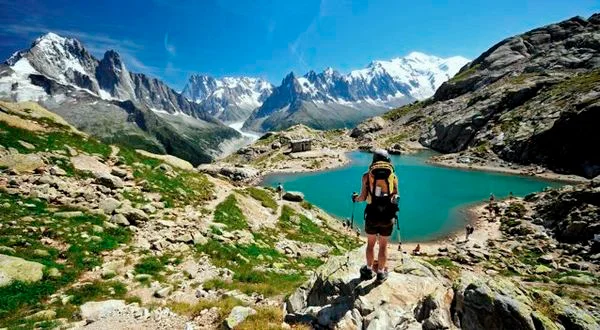
Embarking on the Walker’s Haute Route presents a spectacular journey through the French and Swiss Alps, connecting the mountaineering capitals of Chamonix and Zermatt. Spanning approximately 221 kilometres (137 miles), this trek is not only a physical challenge but also a visual feast, offering close encounters with some of the highest peaks in the Alps.
Distance and Duration
The standard route of the Walker’s Haute Route covers 221 kilometres and reaches its highest point at 2,987 meters (9,799 feet). Trekkers typically allocate around 14 days to complete the journey, although the duration can vary slightly depending on individual pace and the specific route taken. The trail involves a significant elevation gain of approximately 15,200 meters (49,867 feet), testing the endurance of even seasoned hikers.
Best Time to Visit
The best months to undertake this trek are from mid-July to mid-September when the weather is most stable, and the paths are clear of snow. Early to mid-September is particularly enjoyable due to less rain and more stable weather patterns, allowing hikers to fully appreciate the breathtaking scenery without the hindrance of poor weather conditions.
Trail Highlights
The Walker’s Haute Route is renowned for its diverse and stunning landscapes. From the thrilling paths of the Europaweg, offering spectacular views of the Matterhorn, to the challenging three-day crossing from Le Chable to Arolla, the route promises memorable experiences each day. Highlights include the Fenetre d’Arpette, a high rocky pass, and the Cabane de Moiry, which involves a steep climb into the mountains. The trek also offers glimpses into rural Swiss life, particularly in the pastoral sections between Champex and Le Chable and the alternative valley stage into Zermatt for those preferring a lower finish.
This trek combines challenging climbs, breathtaking views, and cultural immersion, making it a must-experience adventure for avid hikers seeking to explore the heights of the French and Swiss Alps.
Conclusion
In this guide to the world’s best hiking trails, we’ve explored iconic treks such as Everest Base Camp, the Inca Trail, and the Laugavegur Trail. Each trail presents its own unique challenges and rewards, allowing hikers to experience stunning landscapes and cultural significance. Whether it’s conquering Kilimanjaro, experiencing the diverse ecosystems of the Torres del Paine Circuit, or navigating the rugged Kalalau Trail in Hawaii, these treks offer unparalleled opportunities for adventure and self-reflection.
The significance of these hikes goes beyond the physical journey, offering avenues for personal growth, cultural exchange, and a deeper appreciation for our planet’s delicate ecosystems. As we conclude, the stories of these trails serve as a reminder of the beauty and resilience of the natural world, inspiring us not only to explore but also protect these landscapes for future generations. Whether you’re a solo adventurer or part of a community of trail enthusiasts, each path offers a unique legacy of exploration, challenge, and discovery. We hope this guide ignites a sense of wonder and encourages you to embark on your own hiking adventure while carrying with you a spirit of curiosity and respect for the earth.
FAQs
What are the best hiking trails globally?
The top hiking trails worldwide include the Tour du Mont Blanc, the West Coast Trail, GR 20, Laugavegur-Fimmvörðuháls, Banff Highline Traverse, Dolomite High Route (Alta Via Uno), the Kesugi Ridge Trail, and the John Muir Trail via Yosemite Valley.
Which thru-hike is considered the most picturesque hiking trails globally?
The Pacific Crest Trail (PCT) stands out as the most scenic thru-hike worldwide. Stretching 2,650 miles all the way from Mexico to Canada, it traverses California, Oregon, and Washington, showcasing diverse landscapes, including deserts, mountains, and forests.
Where is the premier trekking destination in the world?
The top trekking destinations globally include Annapurna Base Camp in Nepal, Routeburn in New Zealand, Everest Base Camp in Nepal, Adam’s Peak in Sri Lanka, the Kailash Circuit in Tibet, the Snowman Trek in Bhutan, Poon Hill Trek in Nepal, and El Camino de Santiago in Spain. All of these trails are one of the most Beautiful hiking spots in the world.
Which country is considered the best for hiking destinations?
The best countries for hiking enthusiasts are Switzerland, known for its Alpine landscapes and scenic mountain trails; New Zealand, celebrated for its diverse terrains; Nepal, ideal for budget travellers; Iceland, famous for its stunning landscapes and the Northern Lights; Norway, known for its breathtaking landscapes and fjords; and Canada, renowned for its vast wilderness. Making all these the world’s best hikes.

